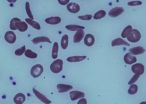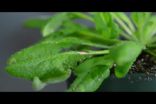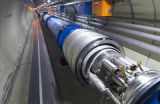(Press-News.org) Use of exome sequencing improved the ability to identify the underlying gene mutations in patients with biochemically defined defects affecting multiple mitochondrial respiratory chain complexes (enzymes that are involved in basic energy production), according to a study in the July 2 issue of JAMA.
Defects of the mitochondrial respiratory chain have emerged as the most common cause of childhood and adult neurometabolic disease, with an estimated prevalence of l in 5,000 live births. Clinically these disorders can present at any time of life, are often seen in association with neurological impairment, and cause chronic disability and premature death. The diagnosis of mitochondrial disorders remains challenging, according to background information in the article. Examples of problems caused by mitochondrial diseases include a type of epilepsy; mitochondrial encephalopathy; lactic acidosis; and a syndrome that includes stroke-like episodes.
Robert W. Taylor, Ph.D., F.R.C.Path., of Newcastle University, Newcastle upon Tyne, U.K., and colleagues studied whether a whole-exome sequencing approach could help define the molecular basis of mitochondrial disease. Whole-exome sequencing is a complex laboratory process that determines the entire unique sequence of an organism's exome (the collection of exons, which are relatively small lengths of a whole genome and contain instructions for the body to build proteins).
The study included 53 patients, referred to 2 national centers in the United Kingdom and Germany between 2005 and 2012, who had biochemical evidence of multiple respiratory chain complex defects. The majority (51/53 [96 percent]) of the patients presented during childhood ( END
Whole-exome sequencing helpful to id gene mutations linked to nervous system diseases
2014-07-01
ELSE PRESS RELEASES FROM THIS DATE:
Medicare-backed breast cancer screenings skyrocket, but do patients benefit?
2014-07-01
Breast cancer screening costs for Medicare patients skyrocketed between 2001 and 2009, but the increase did not lead to earlier detection of new breast cancer cases, according to a study published by Yale School of Medicine researchers in the July 1 Journal of the National Cancer Institute.
While the number of screening mammograms performed among Medicare patients remained stable during the same time period, the study focused on the adoption of newer imaging technologies in the Medicare population, such as digital mammography. Brigid Killelea, M.D., assistant professor ...
Adults stop anti-rejection drugs after stem-cell transplant reverses sickle cell disease
2014-07-01
Adults stop anti-rejection drugs after stem-cell transplant reverses sickle cell disease
NIH trial success suggests a new treatment option for older, sicker patients
Half of patients in a trial have safely stopped immunosuppressant medication following a modified blood stem-cell transplant for severe sickle cell disease, according to a study in the July 1 issue of the Journal of the American Medical Association. The trial was conducted at the National Institutes of Health's Clinical Center in Bethesda, Maryland, by researchers from NIH's National Institute of Diabetes ...
Seeing your true colors: Standards for hyperspectral imaging
2014-07-01
Today, doctors who really want to see if a wound is healing have to do a biopsy or some other invasive technique that, besides injuring an already injured patient, can really only offer information about a small area. But a technology called hyperspectral imaging offers doctors a noninvasive, painless way to discriminate between healthy and diseased tissue and reveal how well damaged tissue is healing over a wide area. The catch? A lack of calibration standards is impeding its use.
After a successful non-human trial, researchers at the National Institute of Standards ...
New NIST metamaterial gives light a one-way ticket
2014-07-01
The light-warping structures known as metamaterials have a new trick in their ever-expanding repertoire. Researchers at the National Institute of Standards and Technology (NIST) have built a silver, glass and chromium nanostructure that can all but stop visible light cold in one direction while giving it a pass in the other.* The device could someday play a role in optical information processing and in novel biosensing devices.
In recent years, scientists have designed nanostructured materials that allow microwave or infrared light to propagate in only one direction. ...
Fear, not data, motivates sunscreen users, research shows
2014-07-01
BUFFALO, N.Y. – We're often told that worrying can be harmful to one's health. But University at Buffalo researchers say that when it comes to preventing skin cancer, a little fear is good for you.
In a study published in the Journal of Behavioral Medicine, the UB researchers found that fear and worry about skin cancer had a bigger influence on people's use of sunscreen than information about the statistical likelihood of developing the disease.
"Most health behavior studies don't account for the more visceral, emotional reactions that lead people to do risky behaviors, ...
NIST test house exceeds goal; ends year with energy to spare
2014-07-01
The net-zero energy test house at the National Institute of Standards and Technology (NIST) in suburban Washington, D.C., not only absorbed winter's best shot, it came out on top, reaching its one-year anniversary on July 1 with enough surplus energy to power an electric car for about 1,440 miles.*
Watch the YouTube video at https://www.youtube.com/watch?v=iJZrOhPk4kg
Despite five months of below-average temperatures and twice the normal amount of snowfall, NIST's Net-Zero Energy Residential Test Facility (NZERTF) ended its one-year test run with 491 kilowatt hours ...
Biomarker predicts effectiveness of brain cancer treatment
2014-07-01
Researchers at the University of California, San Diego School of Medicine have identified a new biomarker that predicts whether glioblastoma – the most common form of primary brain cancer – will respond to chemotherapy. The findings are published in the July print issue of Oncotarget.
"Every patient diagnosed with glioblastoma is treated with a chemotherapy called temozolomide. About 15 percent of these patients derive long-lasting benefit," said Clark C. Chen, MD, PhD, vice-chairman of Academic Affairs, Division of Neurosurgery, UC San Diego School of Medicine and the ...
Plants respond to leaf vibrations caused by insects' chewing, MU study finds
2014-07-01
VIDEO:
Experiments by Heidi Appel and Rex Cocroft at the University of Missouri mark the first time scientists have shown that a plant responds to an ecologically relevant sound in its...
Click here for more information.
COLUMBIA, Mo. – Previous studies have suggested that plant growth can be influenced by sound and that plants respond to wind and touch. Now, researchers at the University of Missouri, in a collaboration that brings together audio and chemical analysis, have ...
Reigning in chaos in particle colliders yields big results
2014-07-01
WASHINGTON D.C., June 30, 2014 – When beams with trillions of particles go zipping around at near light speed, there's bound to be some chaos. Limiting that chaos in particle colliders is crucial for the groundbreaking results such experiments are designed to deliver.
In a special focus issue of the journal Chaos, from AIP Publishing, a physicist at the European Organization for Nuclear Research (CERN) details an important method of detecting and correcting unwanted chaotic behavior in particle colliders. The method is helping accelerator physicists design high-performing, ...
Research reveals a gender gap in the nation's biology labs
2014-07-01
CAMBRIDGE, MA -- Among the sciences, biology consistently attracts the greatest numbers of women to graduate school and academic careers. About half of all biology graduate students are women, and 40 percent of biology postdocs are female. However, those numbers drop dramatically among faculty members: Nationwide, only 36 percent of assistant professors and 18 percent of full professors are women.
A new study reveals a possible explanation for this discrepancy: In the labs of the highest-achieving male biology professors — winners of the Nobel Prize, the National Medal ...






